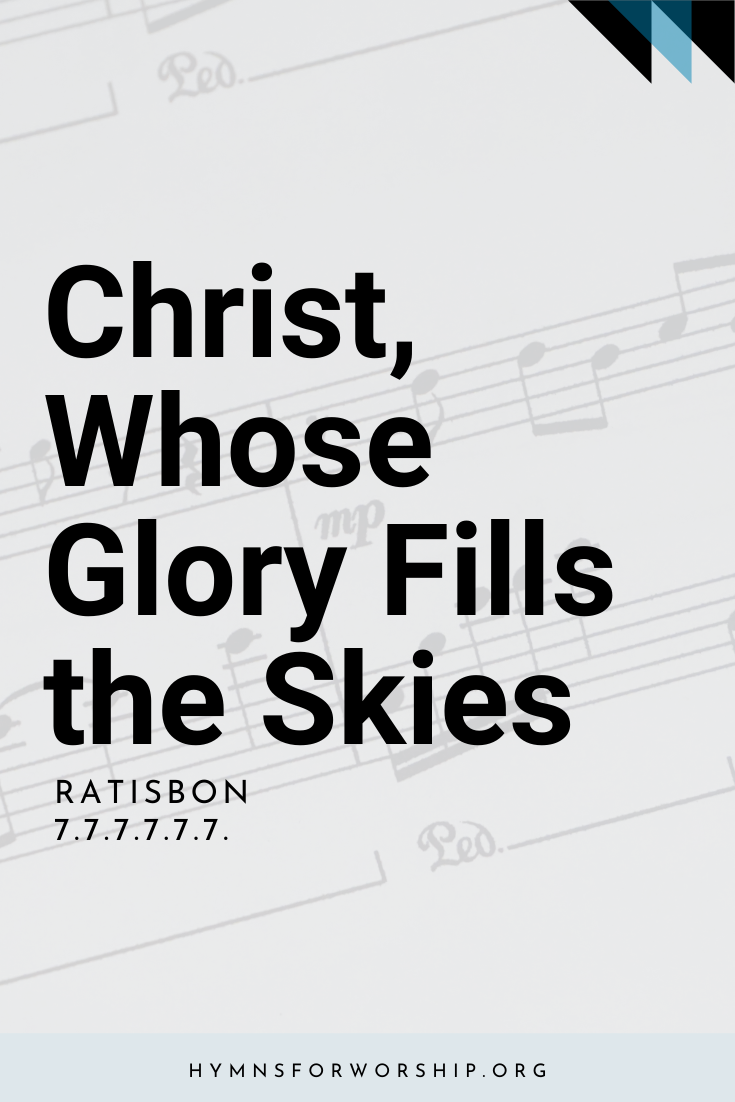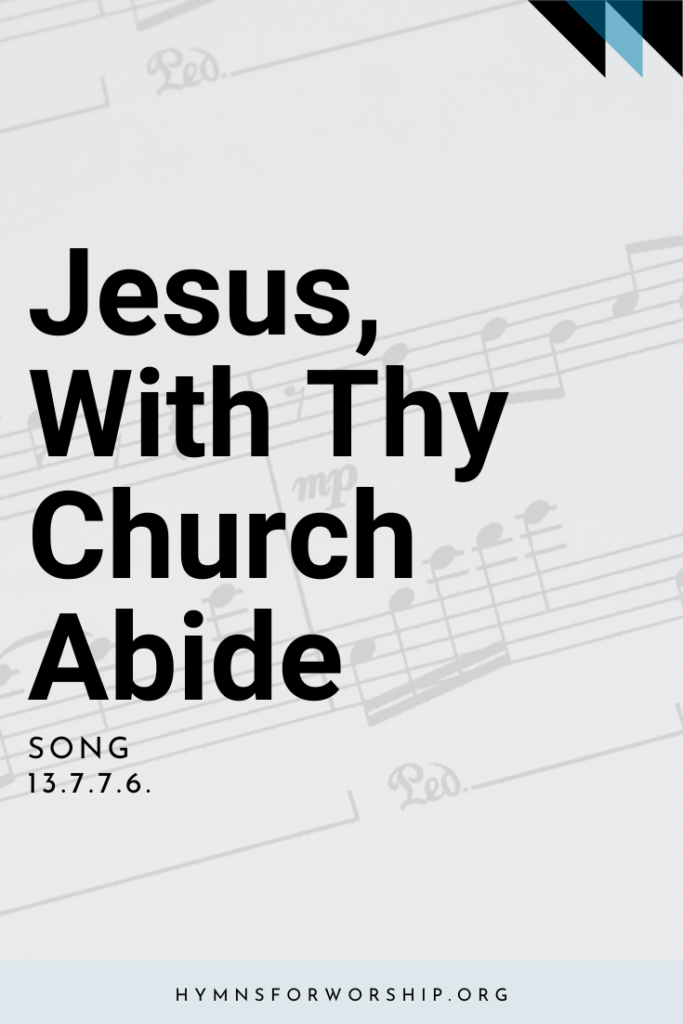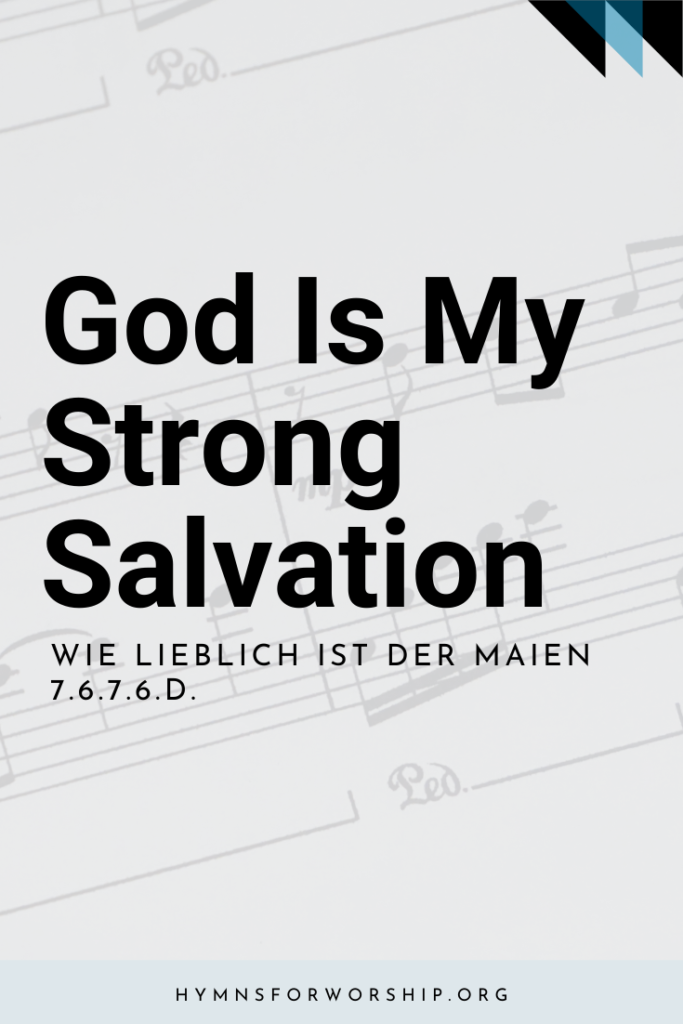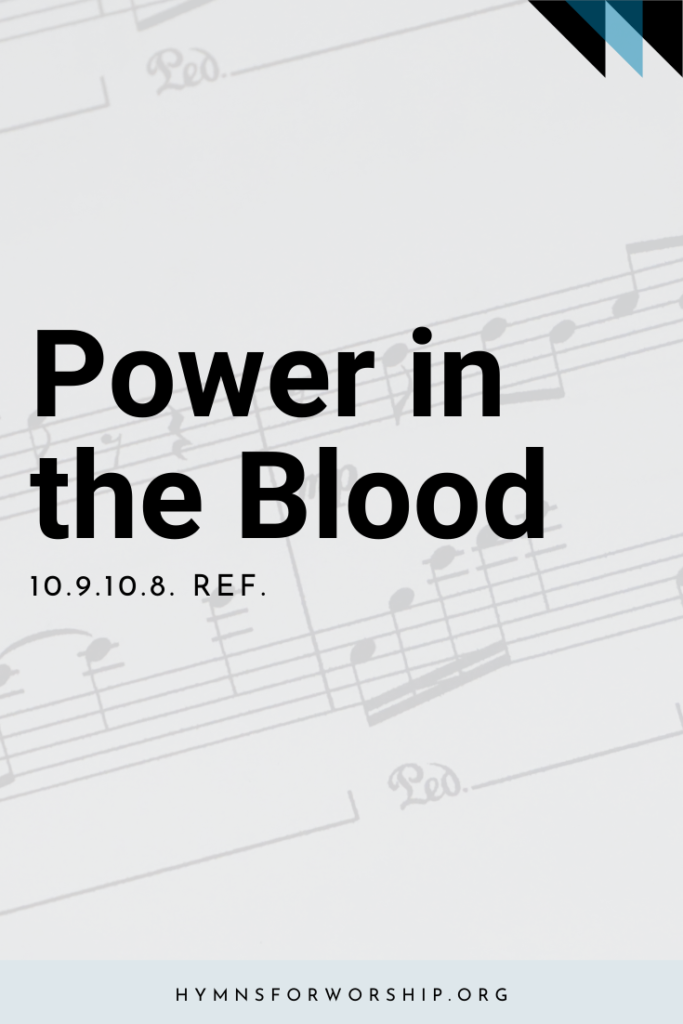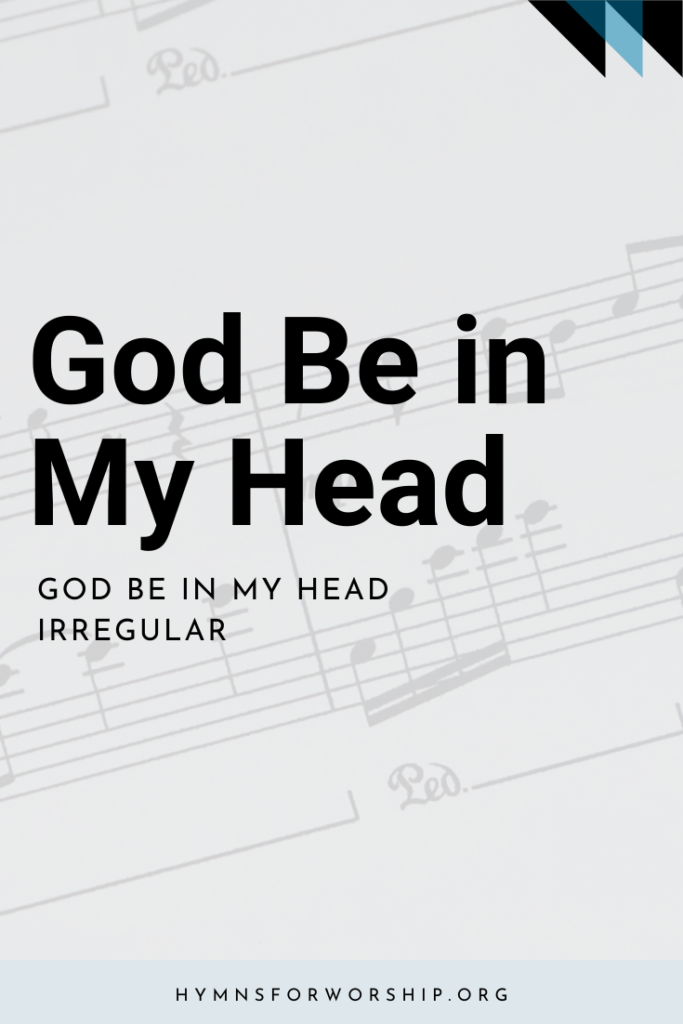JESUS CHRIST >> GLORY & PRAISE
SDAH 233
Christ, whose glory fills the skies,
Christ, the true, the only light,
Sun of Righteousness, arise,
triumph o’er the shades of night;
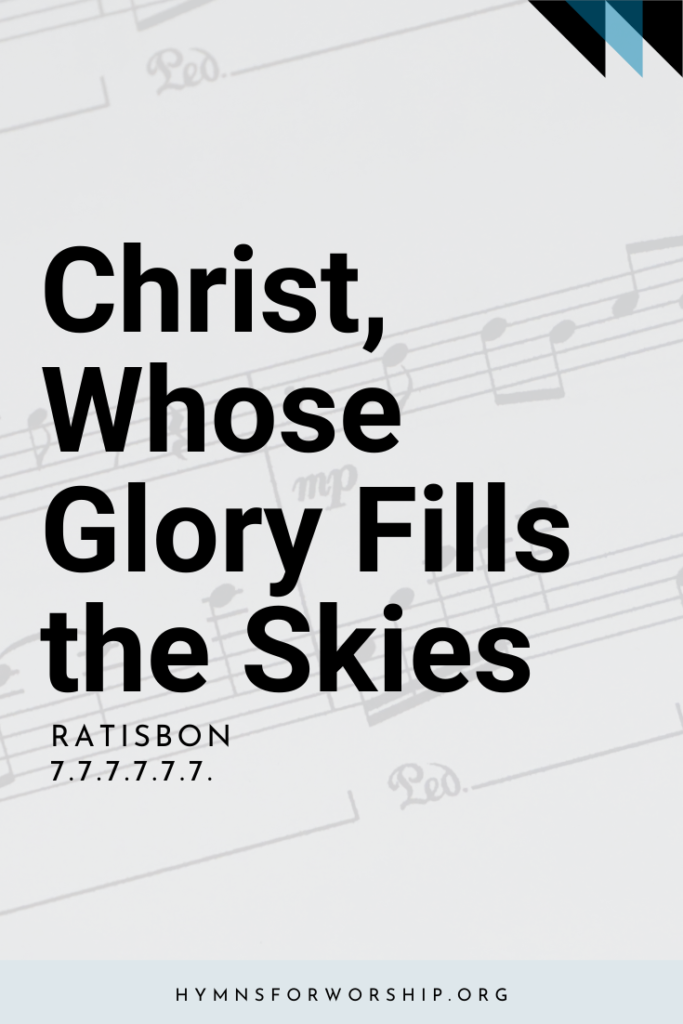

Text
1
Christ, whose glory fills the skies,
Christ, the true, the only light,
Sun of Righteousness, arise,
triumph o’er the shades of night;
Dayspring from on high, be near;
Daystar, in my heart appear.
2
Dark and cheerless is the morn
unaccompanied by thee;
joyless is the day’s return,
till thy mercy’s beams I see;
till they inward light impart,
cheer my eyes and warm my heart.
3
Visit then this soul of mine;
pierce the gloom of sin and grief;
fill me, Radiancy divine,
scatter all my unbelief;
more and more thyself display,
shining to the perfect day.

Hymn Info
Biblical Reference
(a) John 1:9; Mal 4:2; 2 Pet 1:19 (c) Prov 4:19
Author
Charles Wesley (1707-1788)
Hymn Tune
RATISBON
Metrical Number
7.7.7.7.7.7.
Arranged
W.H. Monk (1823-1889)
Tune Source
J.G. Werner’s Choralbuch, 1815
Theme
GLORY AND PRAISE
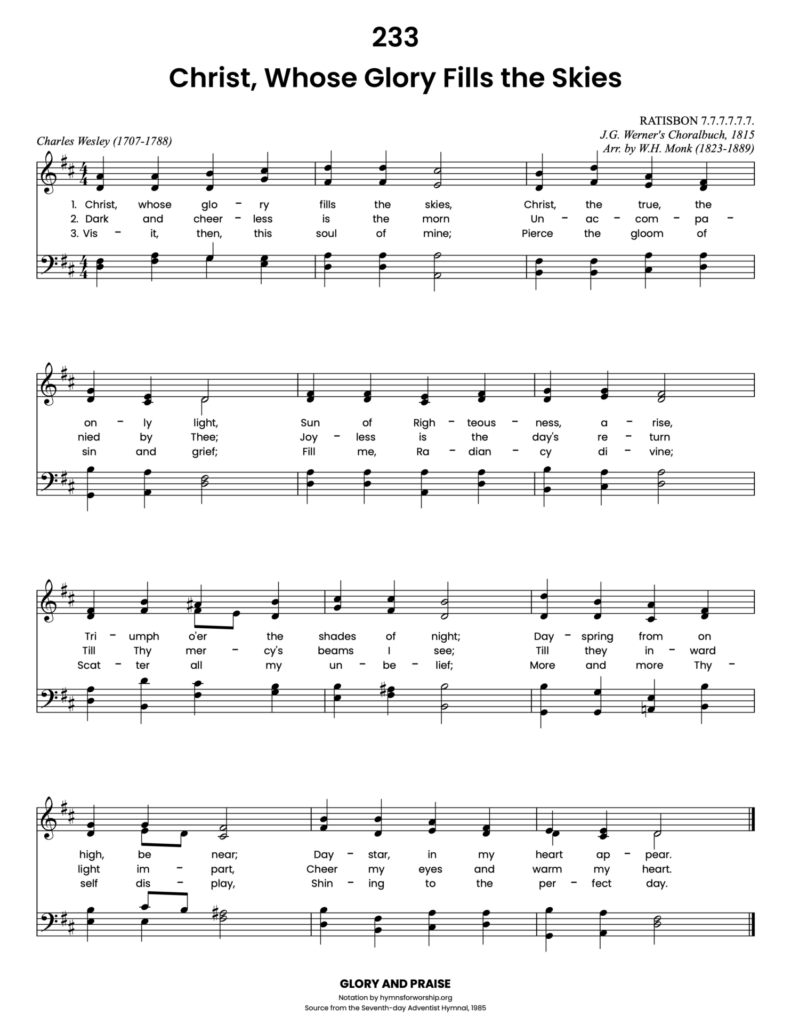
Get the hymn sheet in other keys here
Recommended Reading
Charles was the other Wesley. Alongside his brother John who was considered the main guy behind the founding of Methodism, it was Charles’ hymns that pushed through the envelope of being “just another religion.” His lasting and well-known hymns have captivated Christians all around the world. Through his poetic lines, we are able to sing many hymns with such deep theology.
It was said that he wrote 8,989 hymns. That’s 10 lines of poetry every single day for 50 years. And we are privileged to have sung some of those hymns. Tell me, don’t these hymns ring a bell for you?

Notes
Make each hymn more meaningful with these helpful tools: Short, ready-to-use hymn introductions for church bulletins, multiple ways to introduce a hymn based on your worship theme and in-depth history and insights to enrich your song service.

